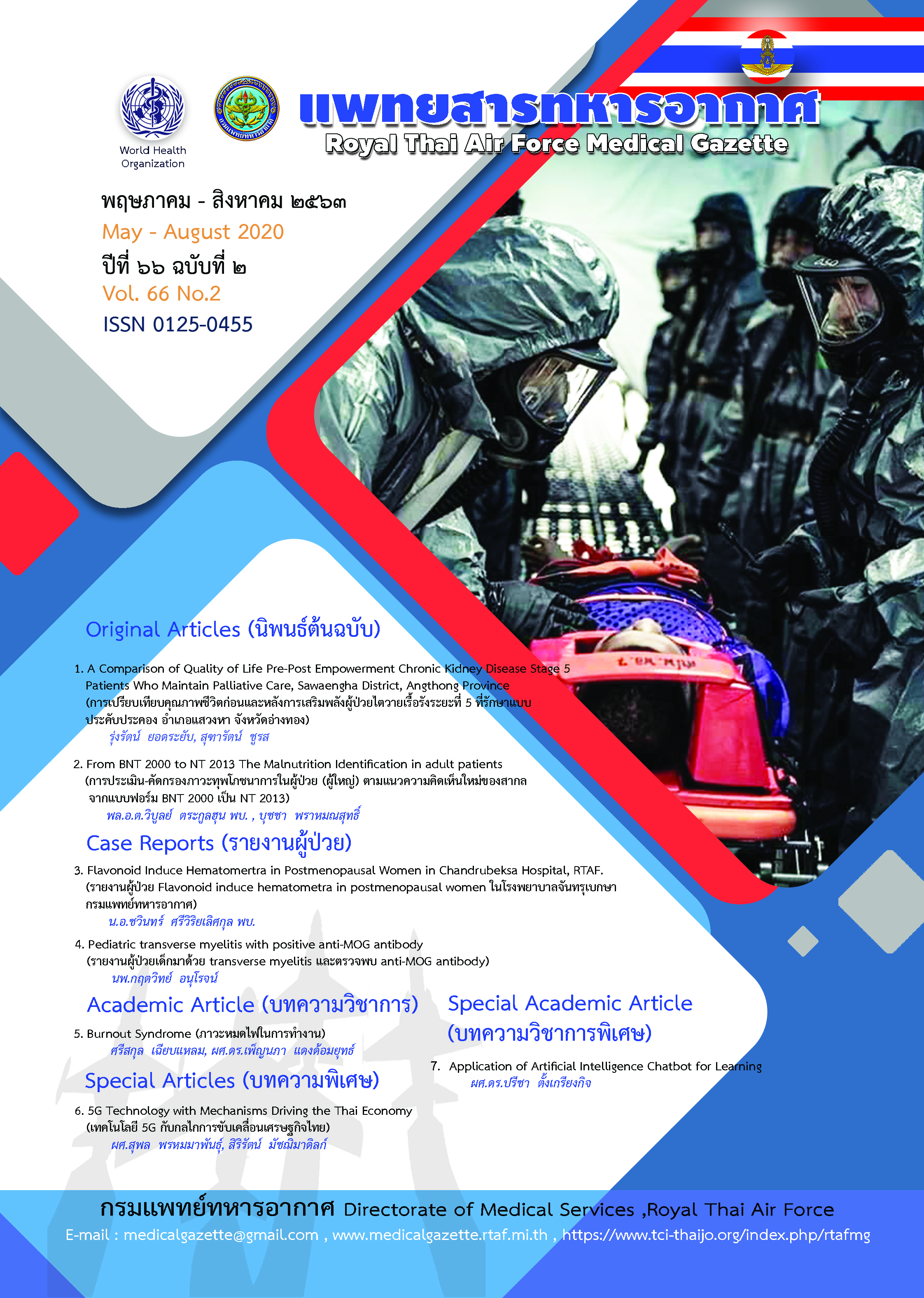5G Technology with Mechanisms Driving the Thai Economy
Main Article Content
Abstract
Background : In the age of fierce economic competition today, including trade protectionism in the situation of the COVID-19 virus, which has led to the economic downturn and stagnation. Causing many countries such as Asia - Europe - America Turn to technology to help compete. Especially 5G technology, which will be an important engine in driving the Thai economy. Including the world economy. What is 5G technology? 5G technology is the fifth generation of wireless communication (Generation 5). In Wikipedia, the Free Encyclopedia 1 defines the meaning of 5G is the fifth generation of mobile phone networks or wireless networks, it is a wireless network that was developed and started in 2018. Base technology, including frequency bands 26, 28, 38 and 60 GHz) has a maximum efficiency of 20 gigabits per second. It has high performance, which is 10 times faster than 4G. 5G low and middle bands use frequencies between 600 MHz and 6GHz, especially between 3.5-4.2 GHz. In 2017, many companies have developed 5G technologies such as Samsung, Intel, Qualcomm, Nokia, Huawei, Ericsson, ZTE and others. Although 5G will cover the world by 2020, South Korea has started providing this technology at the 2018 Winter Olympics. In 2018, Verizon plans to provide 5G FWA in four cities in the US, Sacramento, LA, Indianapolis and Houston. As for Sarunjade, it means that Generation 5 or the fifth generation of communications that the future will not be just a mobile phone, but all kinds of devices that can connect to the Internet (Internet of Things or IoT). It is said that if we have 5G, we can download videos, movies or apps as fast as 10,000 Mbps! If using 4G, watch online videos (8K size) or download movies, wait 6 minutes. But if there is 5G, it only takes 6 seconds!
Article Details
บทความที่ได้รับการตีพิมพฺเป็นลิขสิทธิ์ของวารสาร
References
2. ศรัณเจษฎ์ (Sarunjade), (2563). 5G คืออะไร? เข้าใจ 5G ง่าย ๆ ไม่ถึง 5 นาที, สืบค้นเมื่อวันที่ 20 กรกฎาคม 2563, จาก https://www.marketingoops.com
3. เศรษฐพงศ์ มะลิสุวรรณ, (2563), เทคโนโลยี 4G LTE, สืบค้นเมื่อวันที่ 19 สิงหาคม 2563, จาก http://www.cioworldmagazine.com/supon-phrommaphan-4g-lte/
4. แอดมิน (Admin), (2563). 5G มาแล้ว! พาส่อง 10 เทรนด์เทคโนโลยีมาแรงปี 2020, สืบค้นเมื่อวันที่ 16 สิงหาคม 2563, จาก https://positioningmag.com/
5. วสิษฐ์ วัฒนศัพท์, (2562). 5G Technology & Ecosystems, สืบค้นเมื่อวันที่ 16 สิงหาคม 2563, จาก http://kmbytlcspu.blogspot.com
6. กองบรรณาธิการ, (2563). อีโคซิสเต็ม 5G ฟันเฟืองสำคัญขับเคลื่อนเศรษฐกิจไทย, CIO World & Business, ISSUE218, July 2020, Page 46.
7. ประชาชาติธุรกิจออนไลน์, (2563). “กสทช.-ดีอี” เร่งดัน 5G เต็มสูบ หวังกระตุ้นเศรษฐกิจ 2.3 ล้านล้าน, สืบค้นเมื่อวันที่ 16 สิงหาคม 2563, จาก https://www.prachachat.net/ict/news-312472
8. กรุงเทพธุรกิจออนไลน์, (2563).จุฬาฯ เดินหน้า 5G for REAL ทดลอง/ทดสอบใช้จริง, สืบค้นเมื่อวันที่ 19 สิงหาคม 2563, จาก
https://www. bangkokbiznews. com/news/detail/892537
9. เทอดพงษ์ แดงสี และพิสิฐ พงพงศ์เตชวณิช, (2563). 5G: เทคโนโลยีการสื่อสารแห่งทศวรรษหน้า. สืบค้น เมื่อวันที่ 26 สิงหาคม 2563
จาก https://www.researchgate.net/publication/335714438
10. บทสรุปผู้บริหาร, (2563). เทคโนโลยี 5G กับผลประโยชน์ด้านเศรษฐกิจของประเทศไทย: Smart Contract และผลประโยชน์ทาง
เศรษฐกิจต่ออุตสาหกรรมไทย, สืบค้นเมื่อวันที่ 26 สิงหาคม 2563 จาก http://www. nbtc.go.th/ getattachment/Services/quarter2560/


